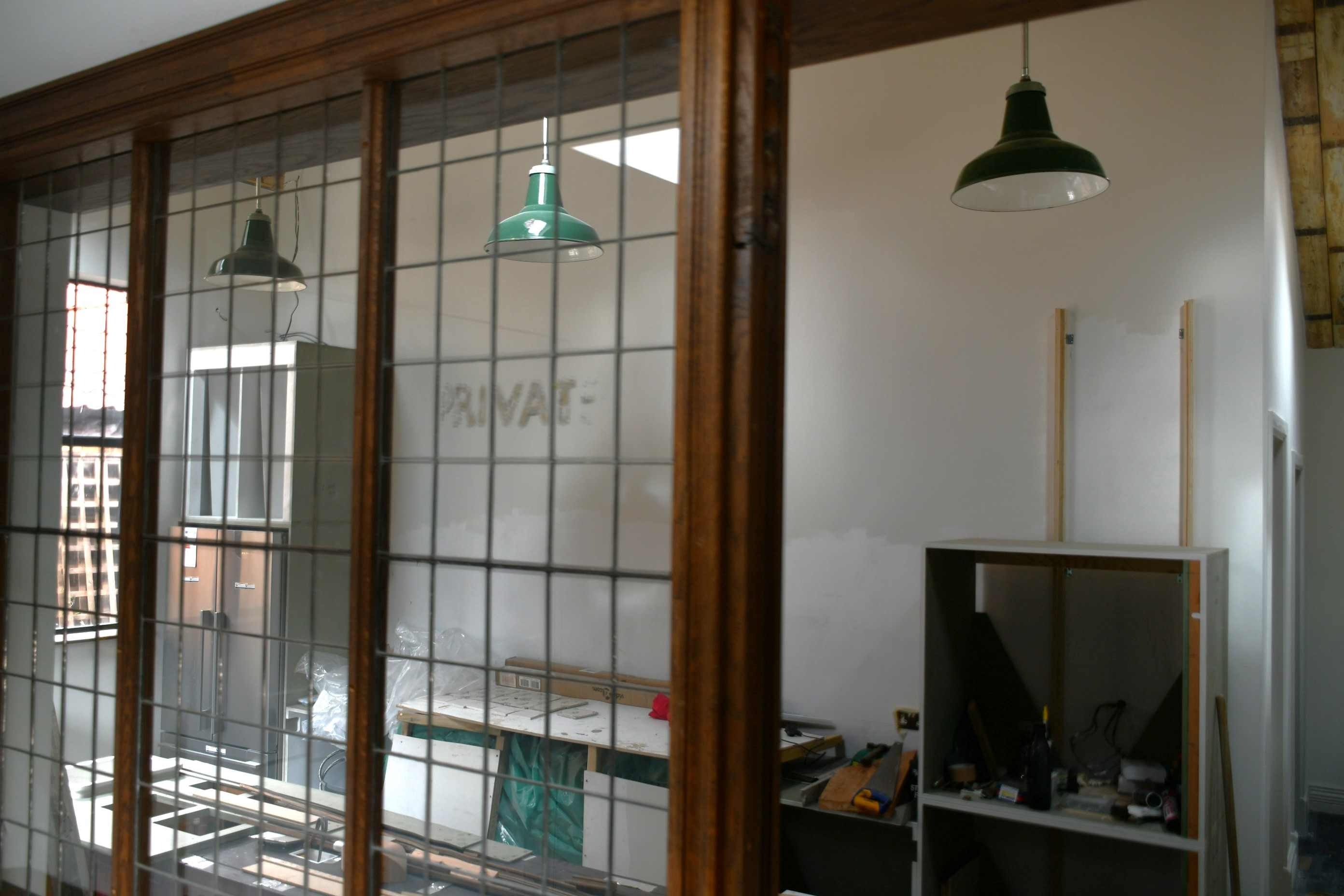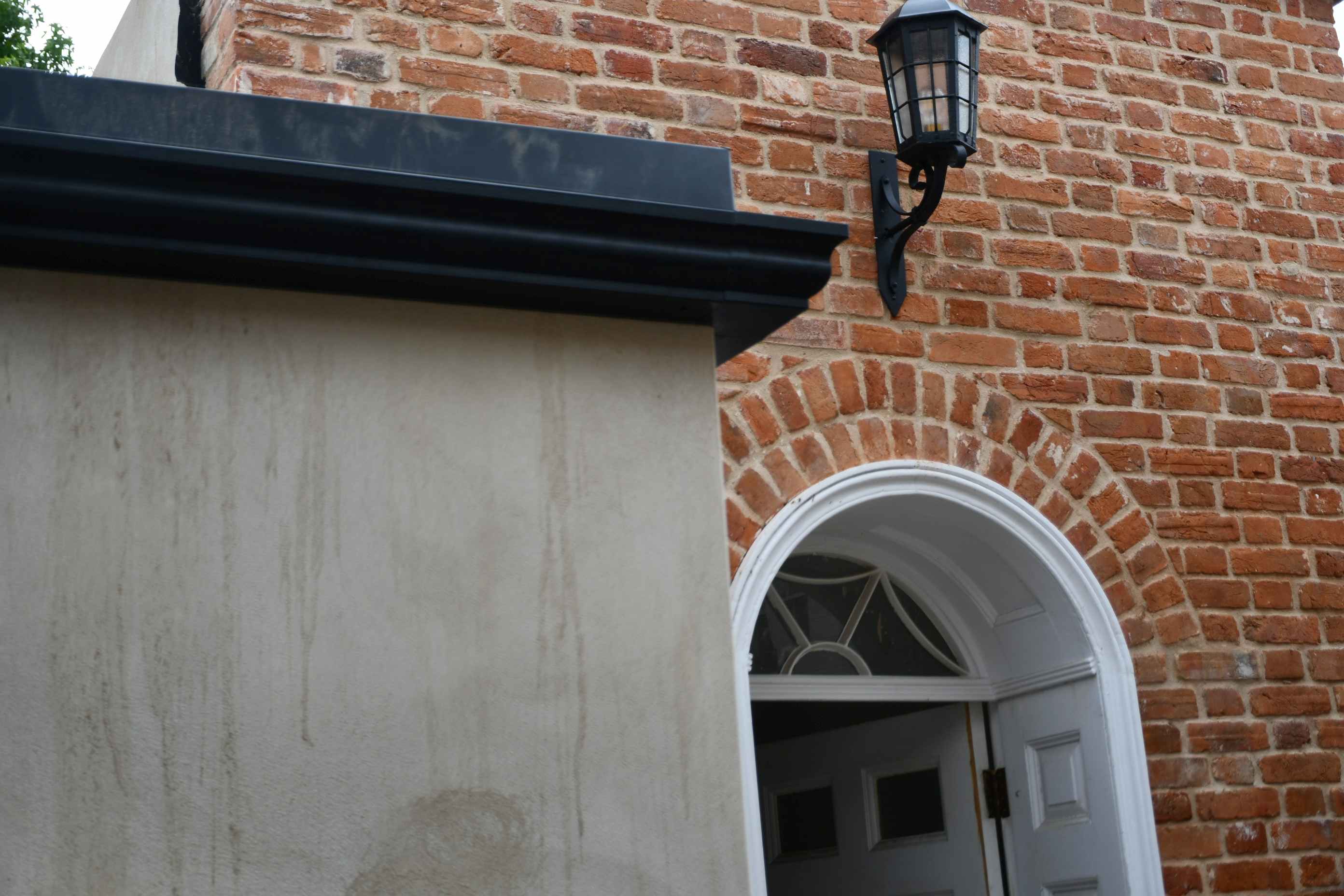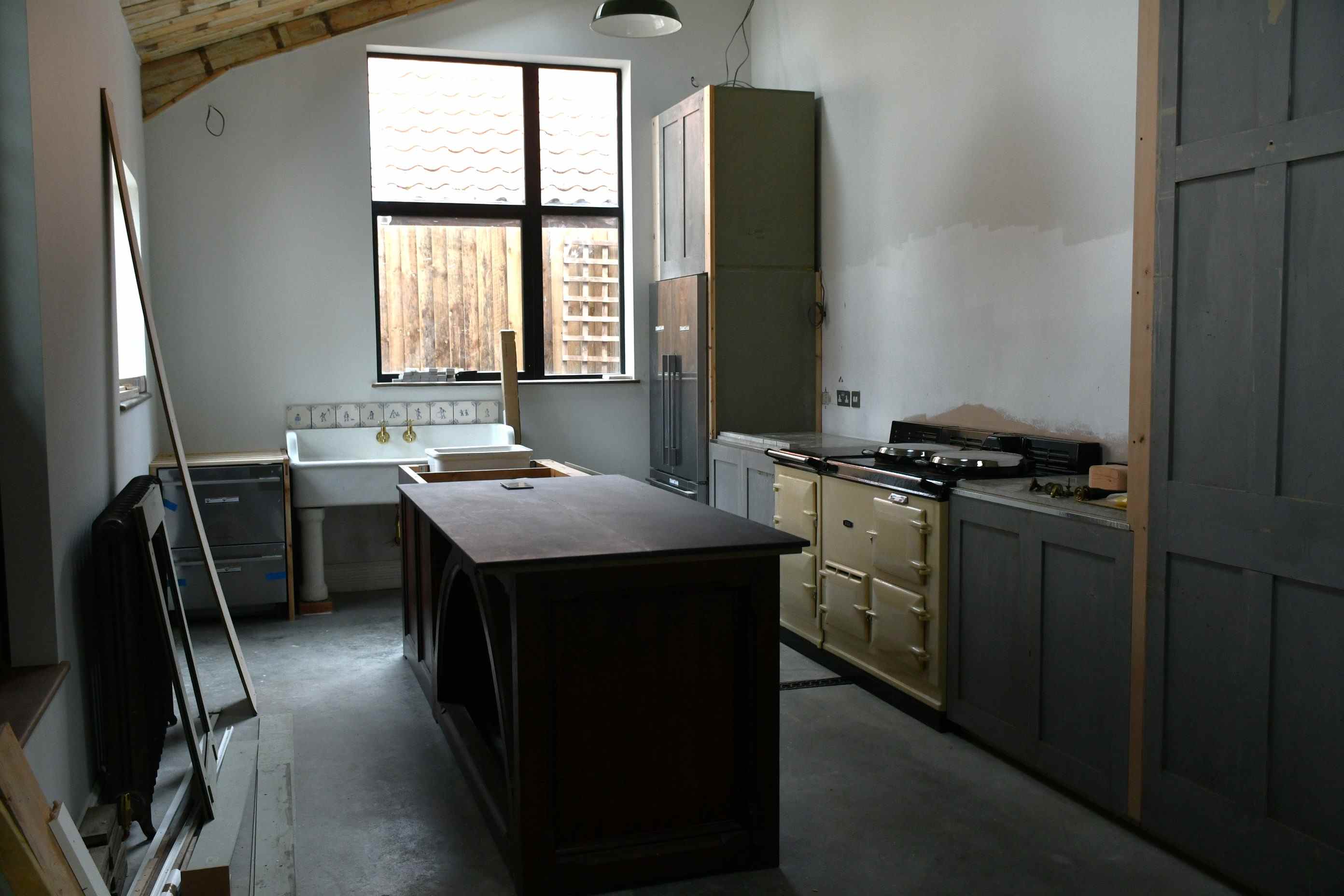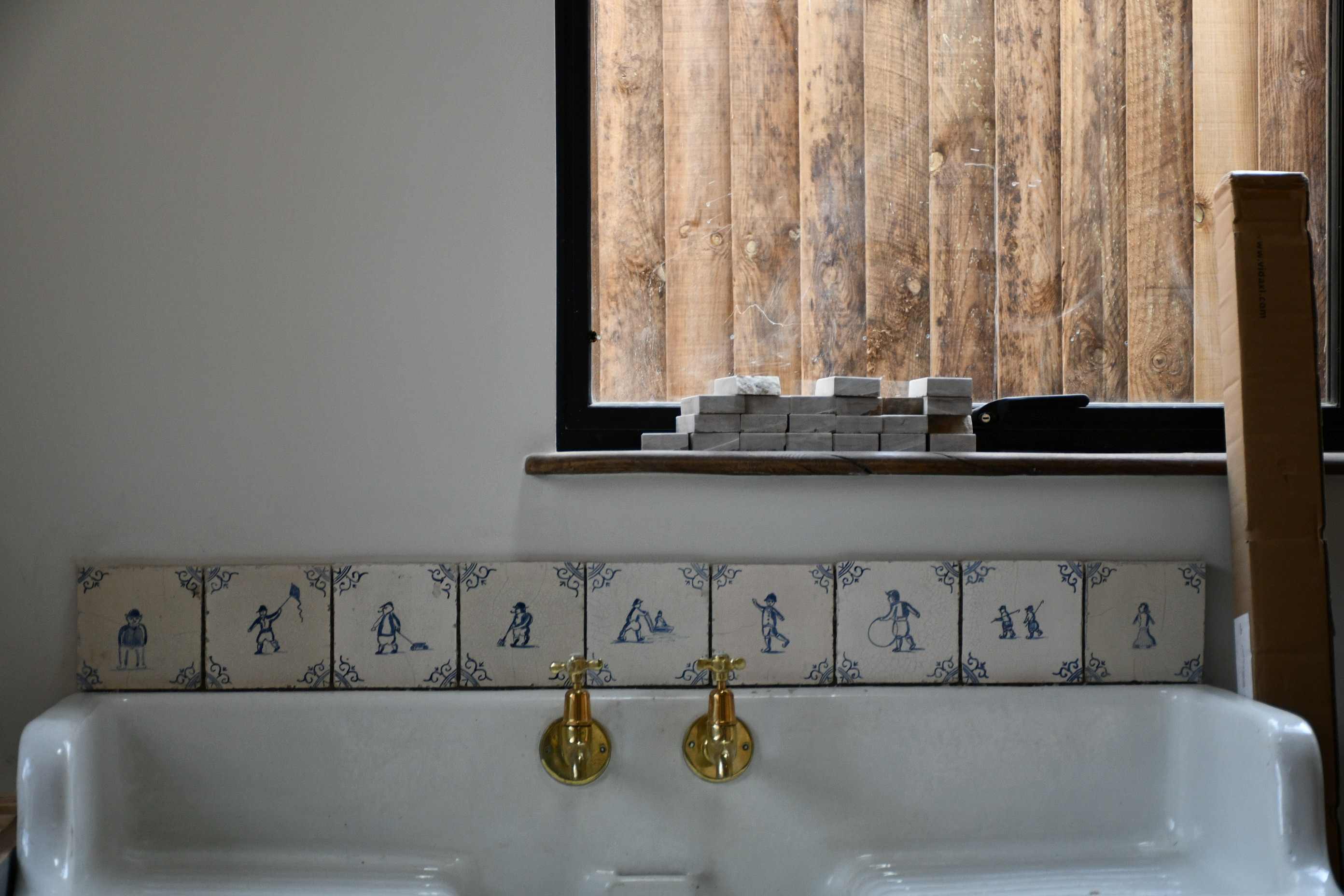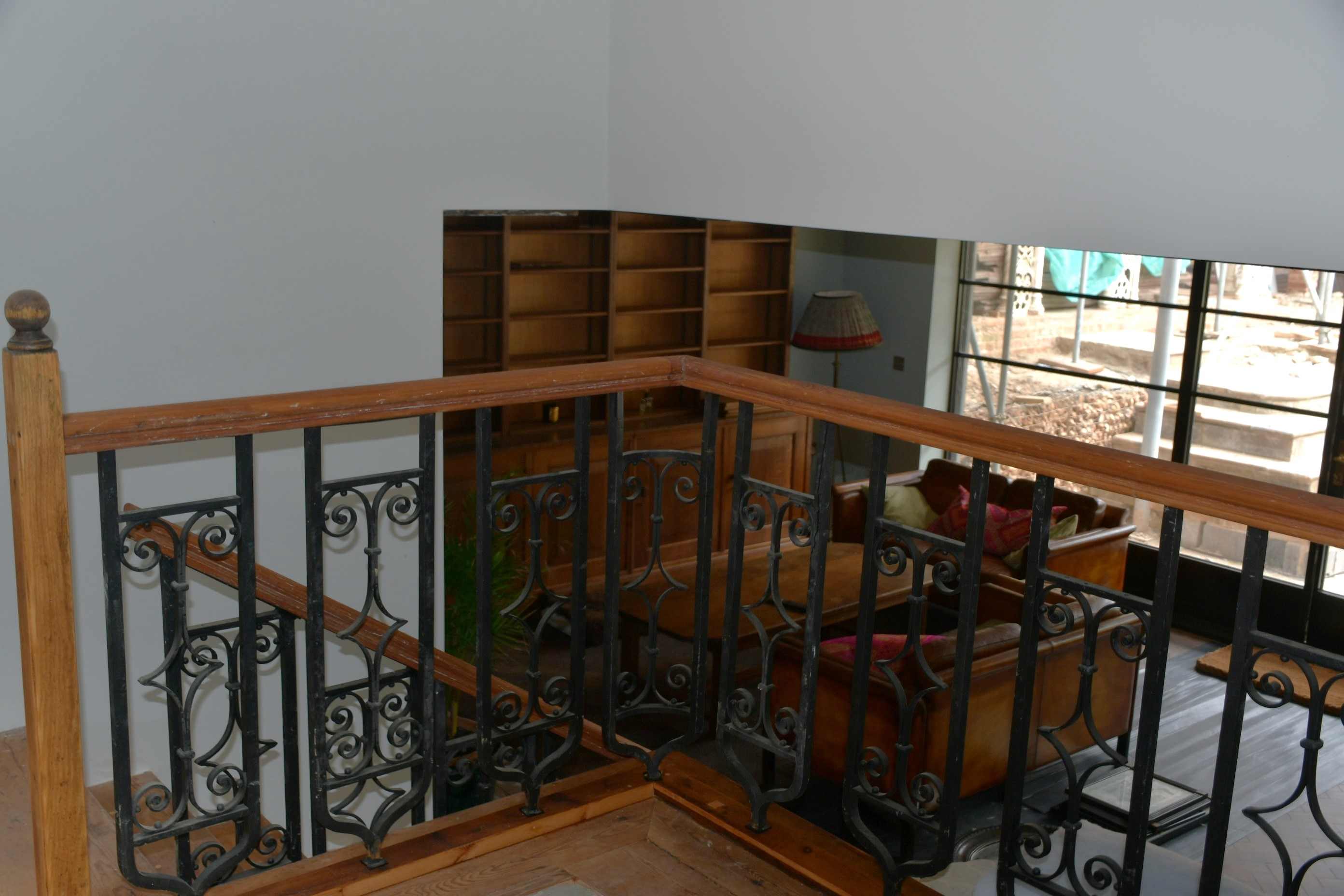FIXTURES AND FITTINGS
First fix electrical and plumbing was largely done using new products out of necessity. However, the second fix comes with a much greater opportunity to use antique and reclaimed items. Amongst many professionals there is a reluctance to embrace the use of secondhand fittings. Common arguments are things like, ‘you can’t get the replacement parts’, ‘they don't have standard fittings,’ ‘they won't conform to regulations”, “it'll be imperial sizes and not comparable with new metric fittings”. Most of these arguments are true to an extent, but none are insurmountable, and some are easier to resolve than others. We have used nearly all secondhand light fittings and bathroom items. These being items that we have from stock. We also used some secondhand kitchen appliances along with our reconditioned Aga.
ELECRICAL
The issue with new electrical installations is that UK regulations require an electrician to sign off the work. Many antique items can be adapted to ‘conform’ to modern standards; light switches, for example, can be earthed, made child safe and be backed by non- combustible material thus making the switch conform to the spirit of the legal requirements, but the electrician will still find it difficult to '‘sign off” the work without a Kitemark or part number.
We have not used reclaimed light switches just because of this issue, nor have we used reclaimed sockets or recessed ceiling lights. However all the other light fittings are old, second hand or antique. Most, myself, our electricians or the place that they bought from have rewired them. They then have been double checked by the installing electrician.
There are many specialist antique and vintage lighting dealers up and down the country, most of whom will supply rewired lamps that are ready to install. If you want to do it yourself, the parts required for most old lights are still available to purchase, however, it can be confusing and difficult to select the right fitting for each lamp and it does still need to be installed by a qualified electrician.
I did not do a lot of lighting in our shop for the simple reason that we never had the ceiling height to display large chandeliers and Edwardian opaline pendant lights. So we have had to buy some lights specifically for the build rather than use them from stock. We did have some interesting items, such as a wall light that we manufactured from some carved alabaster, some deco ceiling lights with original flambeau glass shades and a staircase chandelier that I acquired many years ago from a large hall outside Preston.
Our kitchen has full height ceilings, and is quite industrial in look, hence we have hung large vintage green enamel factory shades, but in most of the other rooms, where the ceiling heights are not so generous, we have mainly lit them with wall lights. I find that old Victorian gas lights are very versatile and although sometimes hard to wire up make good simple period looking lighting.
We have bulkhead lights for outside and a lantern over the front door. This possibly sounds like a complete mix of styles but hopefully each fits into the space and surroundings.
KITCHEN
I like kitchens. They are my favourite room in any house. This being that I like to cook, eat and drink! So, designing the kitchen is important to me. It all started with a job that we did in a Large Norfolk property, The Grange, where the owners decided during their renovations that they didn't want the contents of the scullery. We carefully removed the doors and shelving, which included a pair of 8 ft high laundry cupboard doors, 2 pairs of standard height doors and a set of 4 pairs of undercounted cupboard doors. As we removed them I was thinking that these, it being rare to find a complete set, could be used in our project. With our high ceiling in the kitchen the large doors became the starting point for the kitchen design.
We adapted an altar table, that was no longer required in a local church, into a kitchen island and made some drawers from reclaimed pine boards cut from joists. The worktops in slate and marble are panels from the side of some baths.
The large sink on ceramic legs came from an outhouse in Horwich near Bolton. Possibly made by W R Pickups & Co Ltd. makers of fine fireclay products until 1912 in Horwich. Hardest bit was to find a pair of taps to suit as good kitchen taps from this era are getting scarce.
Wall tiles are also very difficult to find reclaimed. They were often attached using cement based adhesives that make them very hard to remove from the wall. I managed to find mine from a fellow dealer, who, over dinner after a trade function, explained how he had removed them all himself. They were not cheap, but I do believe in rewarding endeavour! The old tiles have a warming patina, like an old piece of oak and there is a great variety in tone that has developed over the years. We have also introduced our small collection of Delft tiles as a splash back.
Then there is the Aga. A much loved 4 oven cream Aga that we were offered by a lady, whose farmhouse was being demolished to make way for a care home. At the time I had some customers restoring a Norfolk hall and they expressed a desire to buy the Aga. A deal was done but at the eleventh hour our customers discovered that they could not use it and we were left with the Aga. After about 6 years at the local Aga specialists store it was converted to eco electricity and shipped to Hingham for installation. Even after all the extra costs it was still much cheaper than buying a new range and comes with all that history.
We have two kitchens in this build as we have a one bedroom annex with a separate entrance. In this kitchen, smaller and simpler, we have used Iroko laboratory tops for the worksurface and our old shop counter, originally in a bakery in Little Snoring, North Norfolk, as an island. Iroko, which is a tropical hardwood from Tropical Africa, sometimes referred to as African Teak it was widely used instead of Teak where a water and rot resistant timber was required. Hence it is often found as worktops in laboratories and schools. Reclaimed Iroko makes a beautiful and practical work surface in kitchens and only ever really needs to be oiled to create a durable and attractive feature.
FIXTURES
Having moved from a 15h Century hall house to this new property not all of our furniture is going to fit in, but we shall use the majority of it, we are not precious about mixing periods but as a rule, I think we are aiming for quality in material and design and simplicity in look. We have purchased a pair of mid-century Danish sofas an oak cabinet, that dates from the 1930’s, from Charterhouse school for the living room, where they are looked over by some Edwardian pine and iron balcony railings. With our new ‘Crittal’ style metal windows and the stained parquet this space is beginning to take shape.
